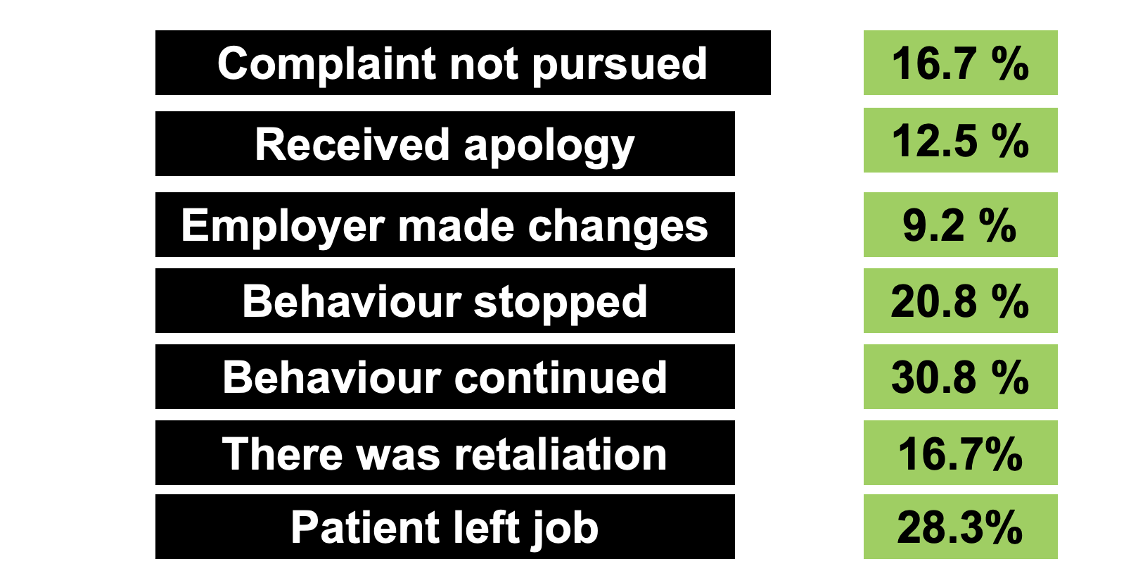1 in 5 Patients with Alopecia Areata Experience Workplace Bullying
Workplace Bullying Among Alopecia Areata Patients: Speaking up Leads to Negative Consequences for Some
Workplace bullying is a persistent pattern of mistreatment from others in the workplace that causes either physical or emotional harm.
Authors of a new study set out to better understand the frequency of workplace bullying among patients with alopecia areata and how bullying was addressed.
Authors used a questionnaire known as the Negative Acts Questionnaire-Revised Scale to assess bullying. This is a 22- item validated tool assesses workplace bullying within the last 6 months using a 5-point Likert scale corresponding to frequency of events. Scores range from 22 to 110 and correspond to being never bullied (<40), occasionally bullied (40–56), and severely bullied (>56)
The questionnaire was administered to the National Alopecia Areata Foundation database to evaluate workplace bullying in patients with AA.
There were 673 patients who ultimately met the inclusion criteria completed the survey. Most respondents were female (n = 537, 79.8%) and Caucasian (n = 508, 75.5%) with an average age of 46.8 years. Most patients were employed full-time (n = 427, 63.4%)
1 in 5 Patients with AA are Bullied
21.67% (n = 146) of individuals with AA experience workplace bullying with an average NAQ-R score of 56.1. This corresponds to the cut off for being considered ‘severely bullied’
What are the more common types of bullying?
53.8% of patients with AA reported frequently having their “opinion ignored” and 47.7% reported “being ignored or excluded” and 44 % reported the “spreading of gossips and rumors” by others.
What are the barriers to reporting bullying?
There were several barriers to reporting bullying
43.5 % identified the “stress associated with filing a complaint”
36 % of patients worried that reporting the bullying might have a negative effect on future career aspirations.
What proportion address the bullying?
Among individuals who self-reported bullying (n = 160), 75.0% (n = 120) chose to address the behavior.
What do people do when bullied?
The most common action when bullied is to discuss it with a manager. Some also discussed with family and friends. 25 % of patient did not take any action. Other options include those shown here:
What are the Consequences when Patients Take Action?
The most common consequences of addressing the bullying behavior were “the behavior continued” (30.8%, n = 37) 28.3 % of patients left their job. Other responses are shown below.
Comment
Workplace bullying is an important problem for patients with alopecia areata. About 1 in 5 patients report bullying. It’s not easy to report bullying. Patients report that there are stresses associated with filing a complaint and there are potential effects on future career options. Some bullying was noted to continue even after some individuals addressed the behavior.
There is an important and urgent need to develop strategies to reduce bullying. This may start with helping patients recognize all the aspects of workplace bullying and helping them to understand their options when this occurs. Strategies may also include continued education of the public and workplace.
REFERENCE
Li SJ et al. Experiencing Workplace Bullying in Patients with Alopecia Areata: A Cross-Sectional Survey Study. Skin Appendage Disord. 2023 Aug;9(4):258-261.
This article was written by Dr. Jeff Donovan, a Canadian and US board certified dermatologist specializing exclusively in hair loss.



